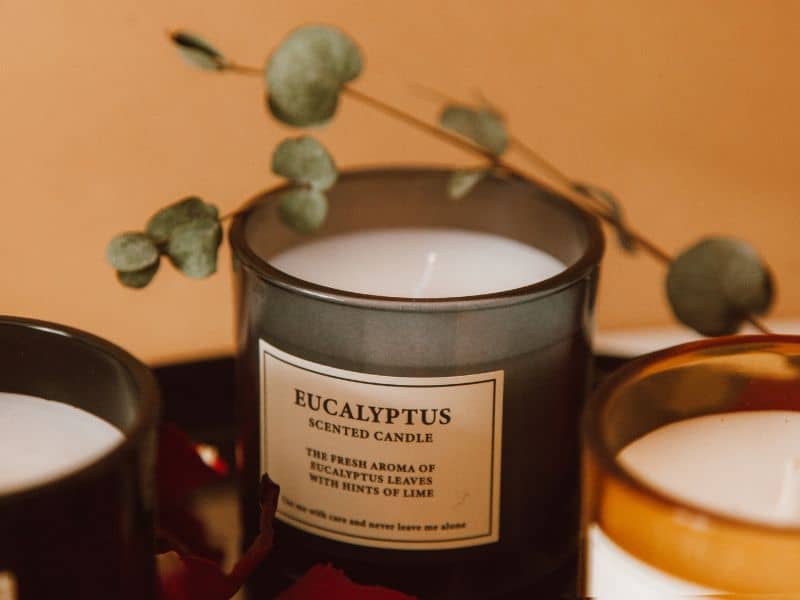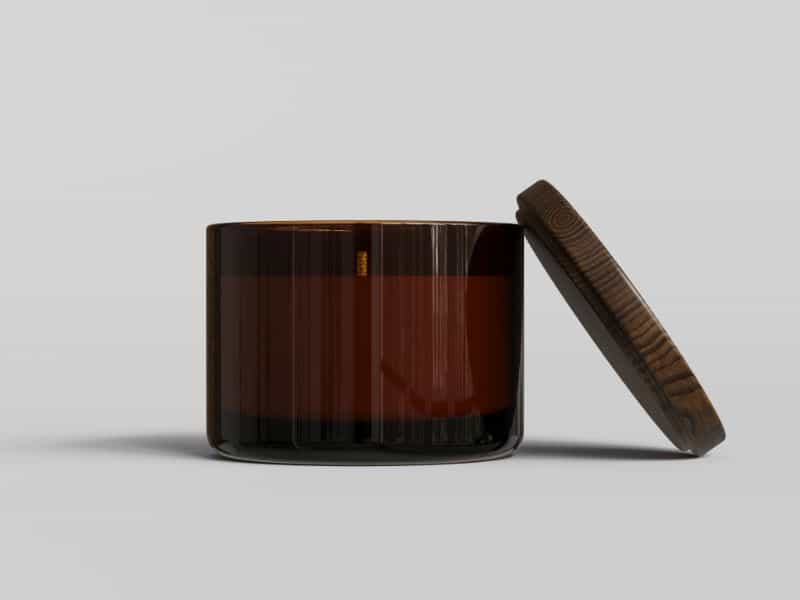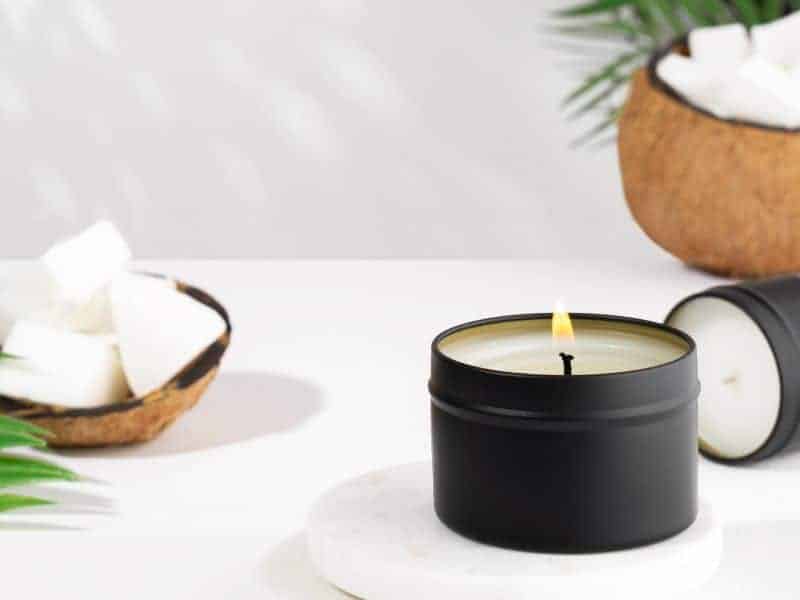There’s so much more to a candle than meets the eye, particularly when it comes to understanding the details that often go unnoticed—like the candle label requirements.
Candle labels are not merely decorative elements; they are a crucial aspect of product safety, brand identity, and consumer protection.
Candle labeling requirements are in place to protect and inform consumers. They are heavily influenced by the Fair Packaging & Labeling Act (FPLA) and Consumer Product Safety Commission (CPSC).
Before we get into the legal candle label requirements, let’s take a moment to understand the different parts of a candle label.
Candle Labels Explained
Embarking on your candle-making journey begins with understanding the language of the industry. When it comes to candle labeling, we often see three terms: outer container, primary label, and safety label.
The outer container is the non-shipping packaging or holder for your candles. It may take various forms, such as a glass jar or a metal tin, and it serves to house the candle and its wax.
The primary label, on the other hand, is directly attached to the container and offers crucial information about the product. This label typically carries the brand logo, candle name, scent, and weight, among other details.
Last, the safety label offers vital safety instructions and hazard warnings to ensure safe usage of the candle. This label is crucial for protecting consumers from potential risks associated with candle usage.
Primary Label Requirements
Delving deeper into the intricate domain of primary label requirements, it’s pivotal to take a thorough look at three crucial elements: content, location, and typography. Each of these components has a unique role in shaping how the candle information is communicated to the customer.
The content of the primary label is the lifeline of customer knowledge about your product. It serves as the bridge of communication between you, the candle maker, and your customers.
To ensure transparency and understanding, the following components should be included in the content of the primary label.
Candle Label Content
- Statement of Identity: This component is essentially the ‘what’ of your product. It specifies what your product is, aiding the customers in their understanding of what they are purchasing. For instance, the label might read “100% Soy Wax Candle” or “Lavender Scented Beeswax Candle.” The key here is to be clear and direct to ensure the customers get the right information at first glance.
- Name & Location: This section of the label covers the ‘who’ – your company’s name, and ‘where’ – the place the candle was made. For instance, it might read “Handcrafted by Candle Co, Austin, Texas”. This detail is significant as it enhances the credibility of your product and helps customers connect the candle to your brand and its place of origin.
- Net Weight: Displayed in ounces and grams, the net weight conveys the quantity of the actual product – the candle wax and wick – that customers are buying. An example of this would be “Net Wt. 8 oz (227 g)”. This measurement doesn’t count the container’s weight, ensuring buyers understand the exact amount of candle they’re getting. It’s an essential piece of information for clear and honest communication with customers, assisting them in making well-informed purchasing choices.
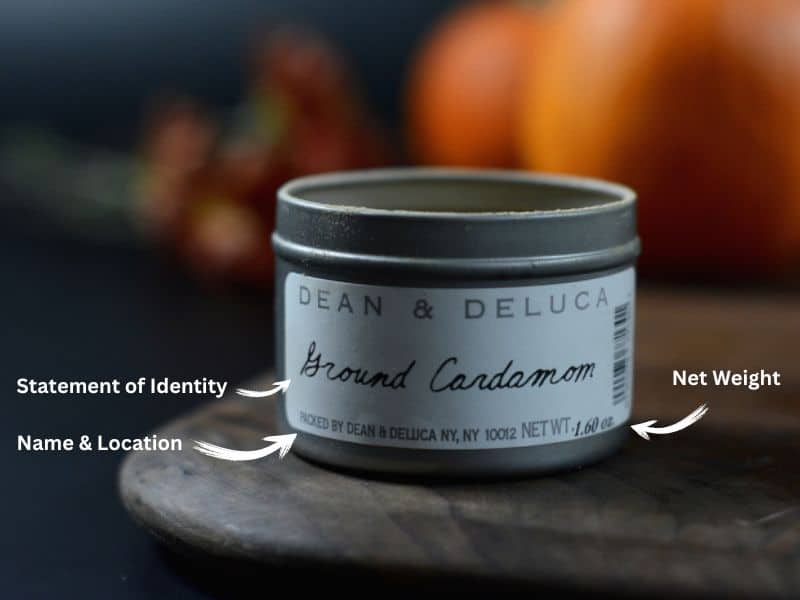
Information Location
The location of the labeling components is regulated by the Fair Packaging & Labeling Act (FPLA) to ensure consistent and straightforward accessibility of the key product information. Specifically, the FPLA mandates that the Net Weight be displayed prominently on the lower 30% of the primary label. All other details, such as the Statement of Identity and Name & Location, can be artistically and strategically placed anywhere else on the label, as long as they are easily noticeable and readable.
Ideal Typography
Typography is the silent communicator on your label that can make or break the clarity of the information provided. The size, style, and color of the text used on the label can significantly influence the readability of the information.
The font size of the Net Weight must be large enough to be easily readable, depending on the overall size of your primary label. The FPLA stipulates minimum font sizes for certain labeling components, with the goal of ensuring they are easy to read.
In summary, the typography should not only enhance the aesthetics of your label but also ensure that the critical product information is immediately identifiable and comprehensible to the customer.
Overview of the Fair Packaging & Labeling Act
Since its inception, the Fair Packaging & Labeling Act (FPLA) has undergone numerous transformations to protect consumers. The FPLA has been instrumental in shaping the packaging and labeling industry, ensuring transparency, and promoting honest business practices.
The FPLA was born out of a need to protect consumers from marketing tricks and deceptive packaging. It laid out rules to help shoppers find essential product information easily, compare similar products, and trust that container shapes and sizes reflected their actual contents.
In essence, the FPLA has significantly contributed to building customer trust and enhancing product comparison, elevating the consumer’s shopping experience. Today, the Act continues to shape the candle industry’s labeling standards, ensuring every candle maker provides their customers with essential, honest information about their products.
Role of the Consumer Product Safety Commission
Back in the 1980s, candles became really popular. People loved using them for their sweet smells and cozy light. But, candles can be dangerous if not used right. They can start fires and hurt people. That’s when the Consumer Product Safety Commission, or CPSC, came into the picture.
The CPSC is like a big brother for consumers. Its job is to keep us safe when we buy and use all sorts of products, including candles. It was born to make sure that businesses make their products safe for everyone to use. It has done a lot of work to make sure candles are safe and that people know how to use them safely.
Candle Labels in the EU
Now, if we hop over to the European Union, or the EU, they have their own rules for candle labels. They’re not too different from ours. They still need to say what the candle is, who made it, and how much it weighs, just like in the United States. The exact details might be different, but the goal is the same: to keep people informed and safe.
Impact of Standards on Candle Safety
Standards, including the ones from the CPSC and voluntary ones that companies choose to follow, have done a lot to make candles safer. For instance, thanks to these rules, the number of fires caused by candles has gone down over the years. This shows how important these standards are in keeping us safe.
For the candle industry, these standards mean that they have to be extra careful when making their candles. They need to make sure their candles burn properly, don’t tip over easily, and have clear and useful labels. While this can be hard work, it also means they can make safer and better candles that people can trust.
What the Requirements Mean for Candle Labels
When it comes to the labels on the candles, there are a few rules that companies need to follow. There are two main types of labels: the primary label and the safety label.
The primary label tells you what the candle is, who made it, and how much it weighs. Sometimes, people think the label needs to say certain things that it doesn’t really need to. One common rumor is that the label needs to list every single ingredient in the candle. That’s not true!
Safety Label Requirements
Safety labels are crucial for candle safety, and they follow specific rules. These rules are outlined by both the Federal Hazardous Substances Act (also known as FHSA) and the ASTM F2058’s industry standards.
The requirements for safety labels include:
- Specific safety instructions: These are warnings or guidelines on how to use the candle safely. For instance, a label may warn, “Never leave a burning candle unattended”.
- Placement of the safety instructions: These rules dictate where on the label the safety warnings should be placed for maximum visibility and readability.
- Clear and legible typography: The warnings must be printed in a font size that’s easy to read and understand. This helps ensure that anyone using the candle can quickly read and comprehend the safety instructions.
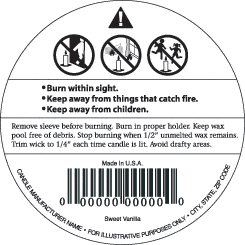
Pre-made Safety Stickers
Did you know you can buy safety stickers that are already made and ready to stick onto your candles? These are available online on various websites, and they already include all the important safety information that needs to be on a candle.
These stickers make it easier for candle makers to meet safety label rules, especially if they’re just starting out or if they’re making candles as a hobby.

Common Candle Label Misconceptions
There are a few common mistakes people make when it comes to understanding candle labels. Let’s clear up some of these misconceptions:
- All ingredients must be listed: This is not true. Unlike food labels, candle labels do not need to list all the ingredients. However, if a candle has certain dangerous substances in it, then these do need to be listed for safety reasons.
- Homemade candles don’t need labels: If you’re making candles at home just for yourself or as gifts for friends, then you might not need a label. But if you’re selling your candles, even at a local market, you need to follow all the same label rules as bigger companies.
- Labels are just for decoration: While it’s true that labels can be pretty and help sell your candles, their main job is to provide important information. This includes what the candle is, who made it, how much it weighs, and how to use it safely.
So, even though candle labels might seem simple, they have a lot of rules to follow and a lot of jobs to do. But at the end of the day, all these rules and jobs help make sure that the candles you buy are safe and enjoyable.
Frequently Asked Questions
The FPLA establishes regulations for labeling consumer commodities like candles. It ensures all necessary information, like net weight and manufacturer details, is provided on the label. This promotes transparency and facilitates fair product comparison, thereby fostering consumer trust and informed purchasing decisions.
The Statement of Identity on a candle label provides information about the type of candle product. For example, it might read “100% Soy Wax Candle” or “Scented Beeswax Candle”. This helps consumers understand the key features of the product they’re purchasing.
The Consumer Product Safety Commission (CPSC) develops and enforces standards to prevent accidents related to consumer products, including candles. Their guidelines aim to minimize risks associated with candle usage, which significantly increased in the 1980s, contributing to safer product design and labeling.
Safety standards ensure that the candle industry adheres to best practices for product safety and quality. They promote a level playing field among manufacturers, encouraging innovation in safety measures and fostering consumer trust, which contributes to the industry’s overall growth and reputation.
Common misconceptions about candle labeling include the belief that all details must fit on the primary label or that decorative elements are more important than the text. In reality, information can be distributed on primary and safety labels, and legibility of text holds paramount importance.
ASTM F2058 provides guidelines for safety labels on candles, including content, location, and typography. By setting a consistent standard for warning symbols, messages, and their readability, it ensures consumers receive clear, accessible safety information, contributing to safer candle use.
Conclusion
In conclusion, we’ve learned about the legal candle label requirements, industry standards, and voluntary guidelines that ensure labels provide accurate, useful, and safe information to consumers. We’ve also demystified the role of regulatory bodies like the CPSC and the influence of acts like the FPLA, helping us appreciate the tireless work that goes into maintaining the safety standards of such a seemingly simple product.
As we conclude this journey, it’s clear that the world of candle labels is one that seamlessly combines art, science, and legislation. It’s a world where every word and symbol matters, guiding us toward a safe and informed use of these delightful objects.
So, the next time you hold a candle, take a moment to read the label and acknowledge the intricate tapestry of information that it presents. Whether you’re a candle maker, a consumer, or someone with a casual curiosity, remember that understanding candle labels is one step closer to ensuring the joy of candles is enjoyed safely and responsibly.

